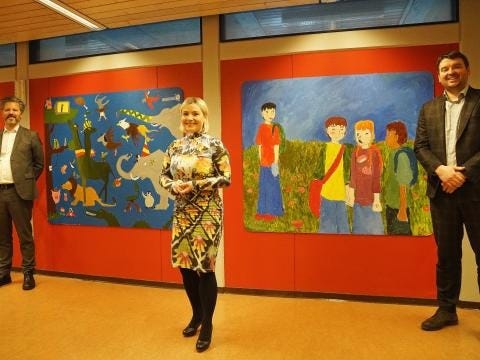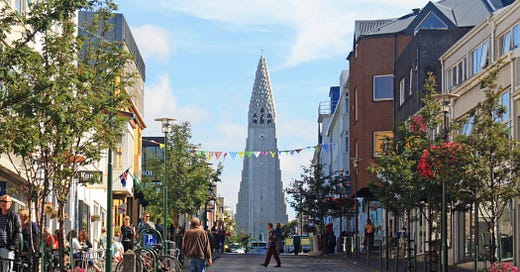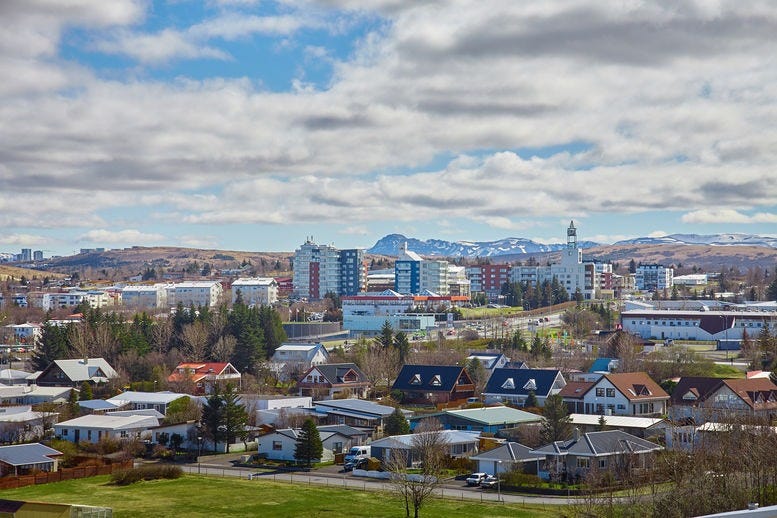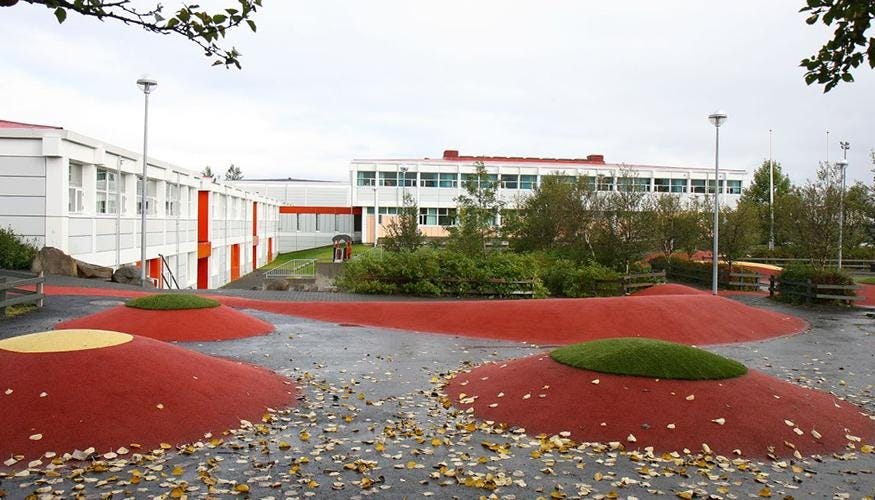Racism, Assimilation, and Icelandic
It has long been my (and often controversial) opinion that Iceland is a racist country. Since I left last year, a steady stream of horrible news about deportations, growing xenophobia in society spurred on by political leaders, and several incidents of public racism have made me very concerned about developments there.
In my lifetime, Iceland has undergone considerable demographic changes. In 2001, I moved from a rich suburb of Reykjavík to a working-class part of a neighborhood in the city proper and I was immediately exposed to a much different and diverse world. Shortly after I moved, I visited the house of a boy who was my former schoolmate. His mom knew I had moved to the Breiðholt neighborhood. It is split into three parts, with one part, Seljahverfið, being much wealthier than the part I moved to, Fellahverfið. She asked me, "To where in Seljahverfið did you move?" It did not cross her mind that someone would move from Garðabær, the bastion of right-wing rich people, to Fellahverfið, a neighborhood built by unions in the 70s, which was in common parlance then, hopefully to a lesser extent now, known as “The Ghetto.”
I never went to visit them again. As a side note, the boy grew up to become an unrepented scammer and criminal along with his older brother. The immorality of the rich! Judging people for their situation while raising sociopaths. A number of guys I went around my age in Garðabær tangled with the law, one attempted a murder with a machete in the street next to where I used to live. Another was arrested for industrial-scale drug production. He was of good stock, had doctor parents.
As a child, I had seen poorer neighborhoods in America, and it was obvious to me that Fellahverfið was not in a similar category. With time, after seeing more of the world, I realized that people calling my neighborhood the ghetto was unrelated to the milieu; it was because of the inhabitants. Because poor people, and especially poor immigrants, lived there, it was a ghetto. Rich and middle-class people lived in neighborhoods, the rest in ghettos. Your street could be immaculate, your apartment building well kept, and your apartment nicely decorated; none of that mattered – by virtue of being poor, foreign, or worse, both, you lived in a ghetto.
The school where I attended for the latter half of elementary school is now one of, if not the most diverse, in Iceland.1 When I was there after the start of the new millennium, we had more students with non-Icelandic heritage than most schools, except one in downtown Reykjavík, which I believe at the time had some special programs for those who recently immigrated to the country. My school definitely didn’t; we just had immigrant kids.
That being said, the school wasn’t a multicultural paradise. There were tense moments that I will never forget; I remember a kid of Portuguese and Angolan heritage came to school, initially causing some friction. I recall him beating a kid up for calling him the n-word. That was the first time I heard that slur and didn’t grasp the gravity of the situation. As a child, I didn’t understand why someone could be so incensed at hearing a word. Now I know his response was the correct one.

No one called him slurs after that incident, once again proving the worth of what my Afi told me when I started first grade. He moved to Reykjavík as a teen, sent from the countryside to live with relatives and get educated. As the new kid from a small fishing town, he was met with adversity and bullying at school. His response was simple yet effective. According to Hollywood, on your first day in prison, you must find the biggest guy and attack them to show you are not a pushover. In that fashion, he went ahead and attacked the bullies, answering violence with violence. And it worked. They knew to let him be after that.
So, Afi‘s message to me starting school was that if someone gives you trouble, picks on you, or bullies you, go on the offensive—physically! Not long after I started school, a kid tried to bully me because of my skin condition, and I attacked him. I don‘t remember how the fight went, but he sure as hell didn‘t try again.
Back to the topic at hand. I cannot imagine it was easy for kids with a foreign background to adjust to living in Iceland in the early 00s when there was no support system and no understanding of the diverse needs such kids have different from those of Icelandic heritage. The kids in my school were, at that time, mainly Thai and Polish. One of my classmates was of Hispanic and Eastern European descent but was just Icelandic. What I think has changed since then is that kids were seen as being from country X/being of X descent - now they all fall under the category of a foreigner and with that a complete outsider, the other, distinct from (white) Icelanders, unable become part of the culture, to ever become Icelandic.
Icelandic identity is closely interwoven with the language, even more so than in most countries. It is our identity, basically the sum of our cultural heritage, passed down through the ages in beautiful sagas and staunchly defended from outside influence. Thanks to the diligence of Icelandic scribes and early translations of the Bible, we preserved our unique identity.
Language is key to assimilation in Iceland. Icelandic is exceedingly difficult, especially for people with non-Germanic mother tongues (and many native Icelandic speakers, especially the most virulent racists who never can spell.) You would think that teaching newcomers the language would be a priority for the government, which is supposed to be dedicated to language preservation (of which Icelandic subtitles for Disney movies seemed to be the most important, maybe because ministers and the then president got a trip to California).2
According to a recent report by the Organization for Economic Co-operation and Development (OECD), Iceland experienced the largest inflow of immigrants over the past decade of any member country relative to its population. The status of Icelandic education for immigrants is dire, as the OECD pointed out in the report, Skills and Labour Market Integration of Immigrants and their Children in Iceland.3
“[I]mmigrants’ skills are often not well used, as witnessed by the high rate of formal overqualification. What is more, immigrants’ language skills are poor in international comparison...“
Integration and assimilation of immigrants is no mean feat, especially for a small and homogenous country like Iceland. The country's geographical isolation leads to a latent suspicion of everything outside. What binds us together is Icelandic. Now, of course, not every adult can easily learn a new language, which makes proper education for children in Icelandic as a second language all the more important. The longer we wait, the deeper the societal divide.
A funny and hopefully fully scripted example (if not, that woman really needs to do her research before moving continents) of the issues facing new arrivals to the country. In this clip from the TV show 90 Day Fiancé: The Other Way, an American woman realizes she needs to know Icelandic to study midwifery in Reykjavík. The look on the university’s representative’s face says it all.
What is to be done?
The solution is always the same: money. For example, make good, modern, and relevant educational material with input from immigrants—like these new simple Icelandic audiobooks. Create a government-funded educational network of free classes in Icelandic and Icelandic culture for new arrivals and those already here. I’m no expert, but this could be done in cooperation with NGOs and educational institutions. Give them the cash, and they will use it correctly; the so-called free market is useless here.
Lastly, we need to make Icelandic more accessible by not judging and correcting people for every mistake and not switching to English when native speakers hear an accent. Icelandic is our finest creation, and we should share it with those who wish to learn it. This is how we ensure its future.
Recently, Icelandic pop star Laufey (I love that she uses her Icelandic name) posted on Instagram a message she sent to Duolingo, the language learning app, asking them why they don’t have Icelandic.4 Hopefully, that will spur some movement. This is accessibility; anyone can download Duolingo. I’ve met people who learned some Icelandic because of their love of Sigur Rós or Björk, so maybe Laufey will, too.
The lack of action by recent right-wing governments in response to greater immigration makes one wonder if there is really any desire to integrate foreigners into Icelandic society. By creating an underclass distinct from the “native” population and segregated by language benefits, those who want to keep wages down maintain an ever-expanding class divide. The division also benefits those who see racism as a route to power, both opportunists and true believers, and those who want to create an even stronger police state. Just a thought.
Now, between 80 and 90% of Fellaskóli students don’t have Iceland as a first language. Around 25-30 languages are spoken there according to this report.








